March 7, 2023
Suburban Backyard Food Forest: Phố Phạm
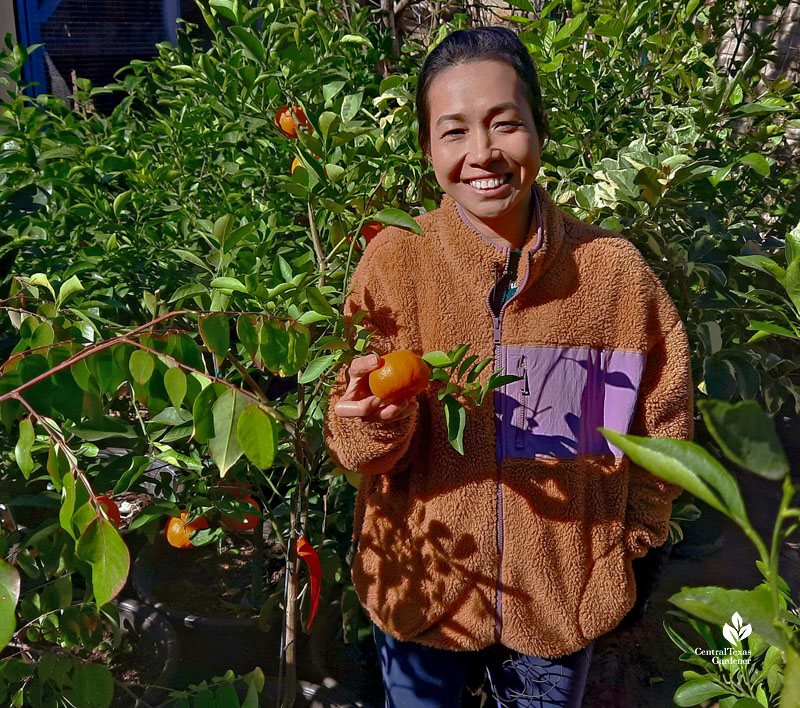
Plant-based food for her young family’s good health: that’s why Phố Phạm scrapped the lawn for a backyard food forest. She lined the fence with seasonal vegetables—including 200 peppers—and 300 fruit and citrus trees, many of them in containers.
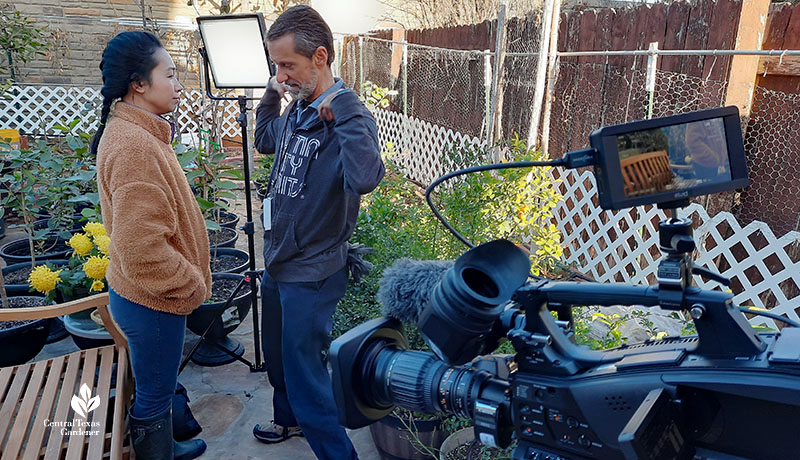
On a sunny day in January, the CTG team headed to her Round Rock backyard sweetly perfumed by flowering trees big and small. Lighting/audio assistant Steve Maedl checks out her microphone placement while director Ed Fuentes frames it up.
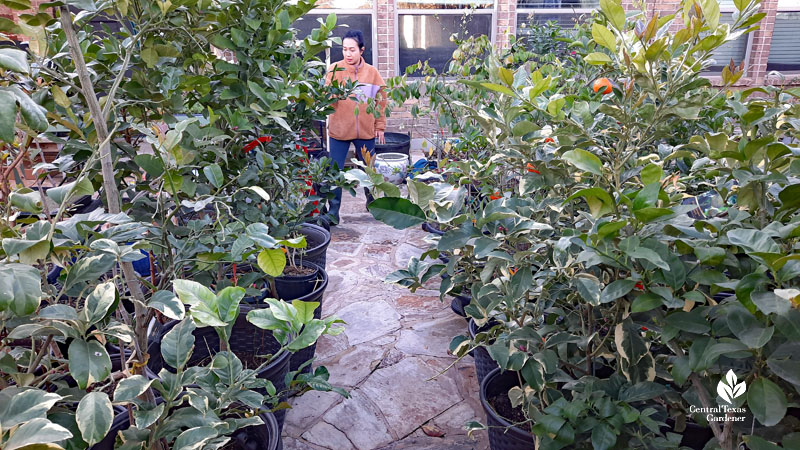
“It started off with one basil plant—one basil plant–and then a tomato plant and then green beans and then zucchini. We only buy things that we cannot grow or make,” she told us.
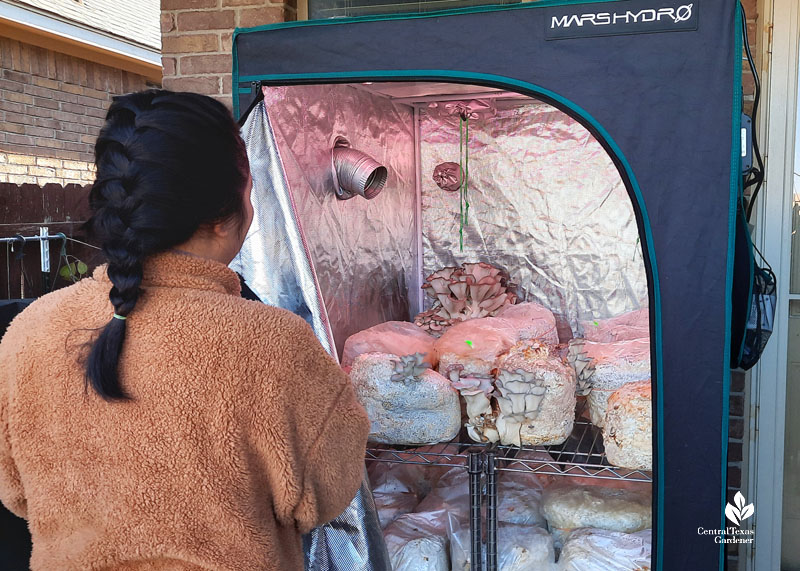
From a hydro grow tent on the back porch, they harvest king blue oyster mushrooms from spent mushroom blocks.
Check out the Central Texas Mycological Society to sign up for spent blocks and attend the many events across Central Texas in the next few weeks.
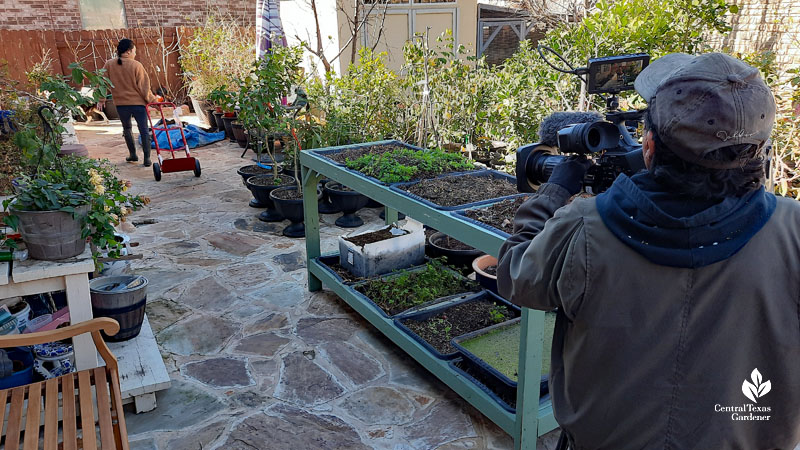
When Phố and husband Thi Le bought their home in 2012, their backyard was the builder’s routine grass and a couple of trees. A few years later, Thi experienced some gout in his big toe. They realized they needed to modify their diet, so she started growing their own fruits and vegetables. Plus, “You cannot beat that taste of a fresh-picked guava. You cannot buy that from the store. The grocery store doesn’t sell calamondin.”
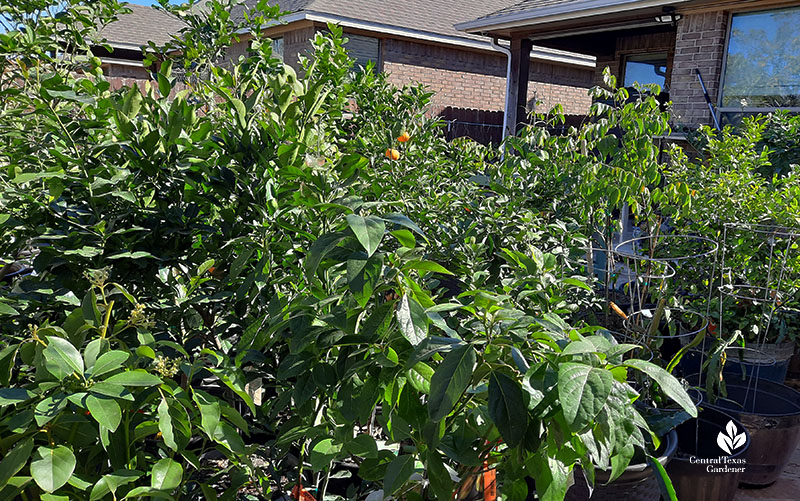
Now they harvest in-season peaches, pears, plums, figs, and guavas, along with lemons, limes, kumquats and calamondins. Did you know that ripe key limes are actually yellow? Yes, she told us: they are picked early for market, but backyard lime tree growers get more juice from ripe ones.
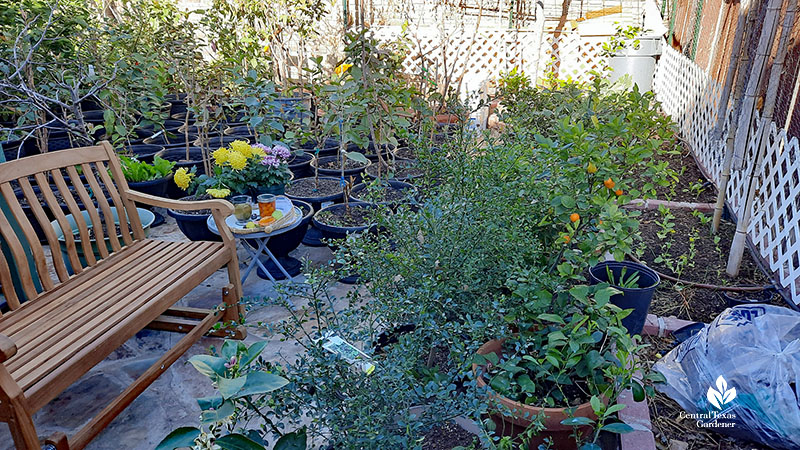
In summer, bitter melons and cucumbers grow up and over trellises. Poles hung along the fence support peppers in containers along with hoya, a flowering tropical from Asia, often grown as a houseplant. Outside in summer, it feeds the bees when flowering plants may take a break from the heat.
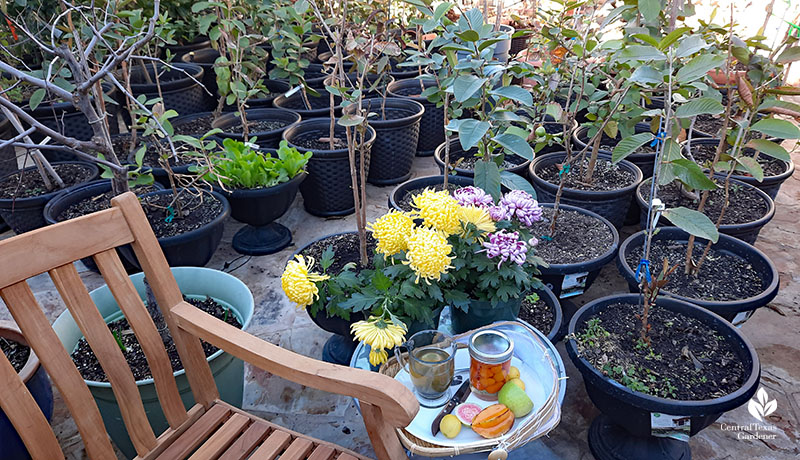
Guavas rule this garden! She grows 10-12 varieties on 75+ plants, including yummy Taiwan pink watermelon guava that’s refreshingly crunchy and sweet.
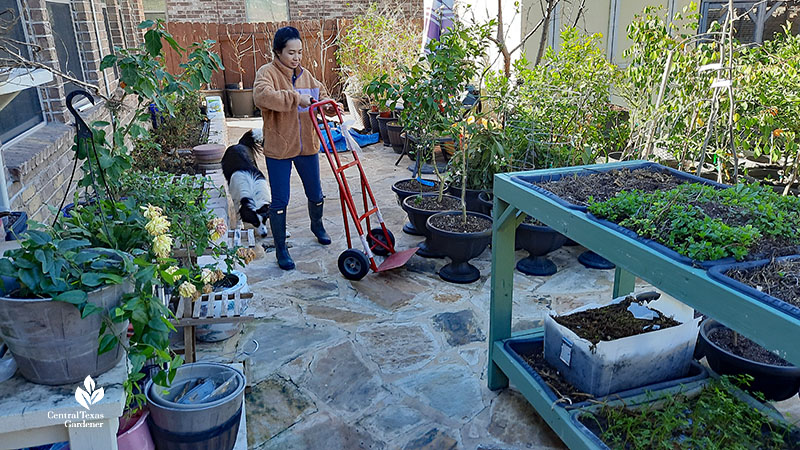
Since the citrus and tropical container plants are not cold hardy, she saved money to pave over the entire yard. When the long-range forecast threatens freeze, the whole family pitches in to move 100+ containers into the garage lit by a series of grow lights. The stones make it much easier to roll a dolly.
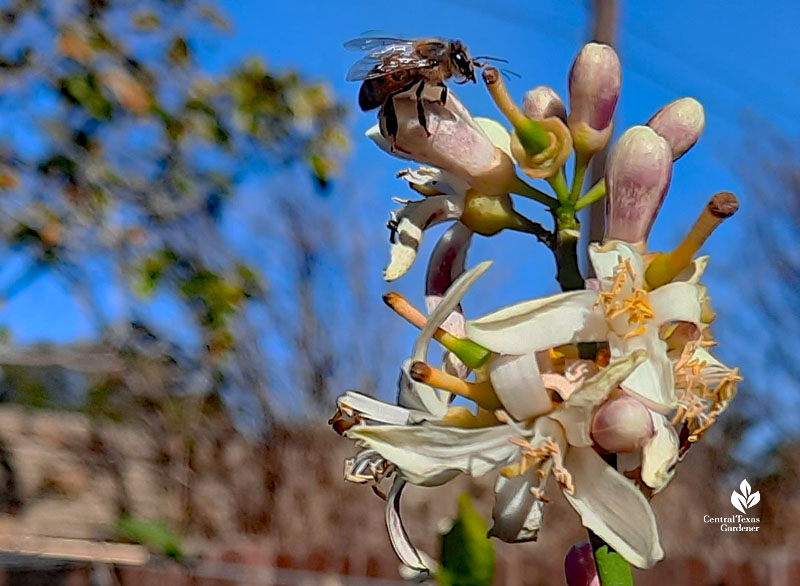
They flower under the lights, but bees are most pleased when the family brings them back out. It certainly was feast day in January when flowering perennials are dormant and annuals may have been nipped in the December freeze.
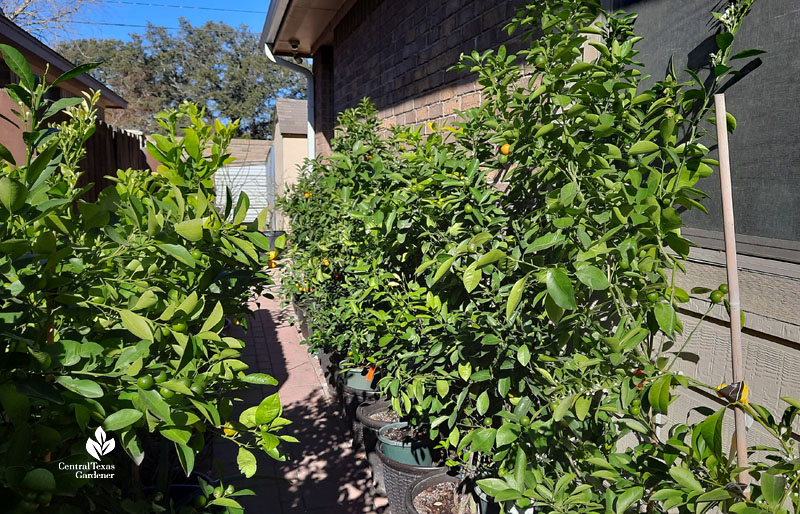
She nails it on space management.
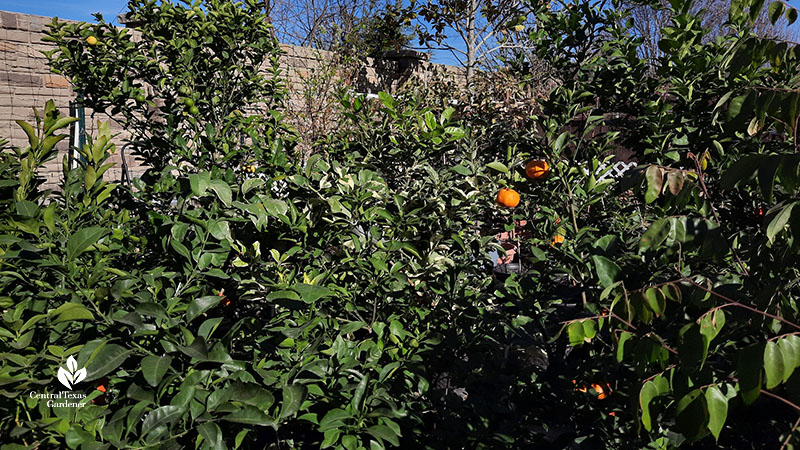
She grows several mandarins, a type of orange. This Dancy tangerine and satsuma oranges are types of mandarins, though satsumas are sweeter, easier to peel, and seedless. Her mandarins include Ponkan, Kishu, Clementine, and honey.
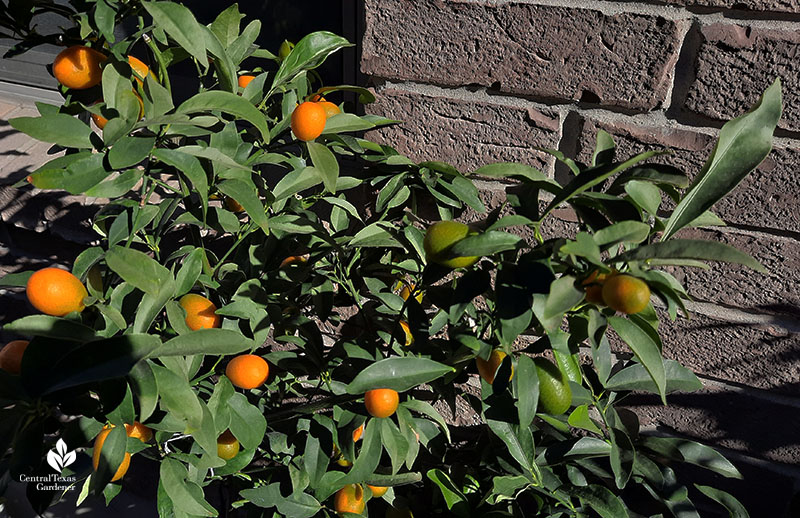
Bountiful kumquats are simply snack-picking yummy. To suit any taste, she grows sweet Meiwa and tart Nagami.
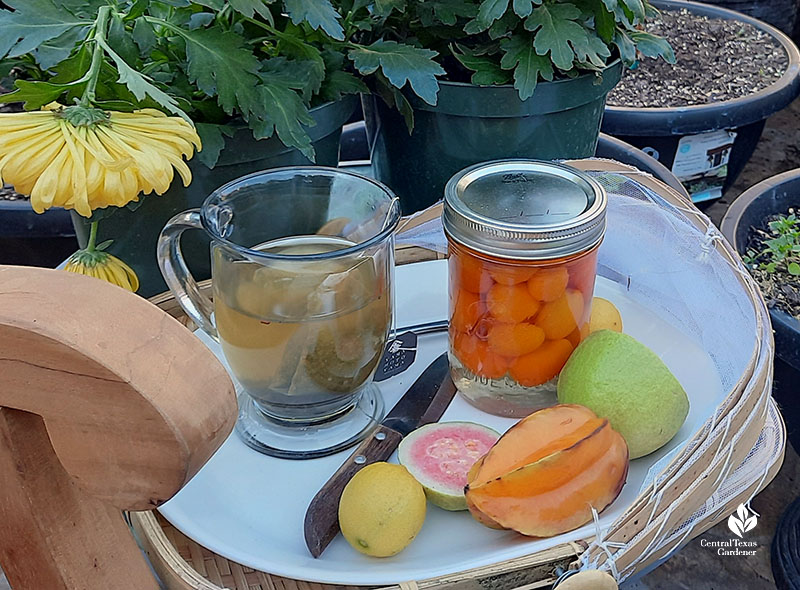
Phố preserves whatever they don’t eat or give away. For this jar of kumquats, she used sea salt and rock sugar. Add the syrup to tea for a boost during cold season or a flavorful drink any time. Also pictured here: ripe key lime, sweet star fruit, and the Taiwan pink watermelon guava.
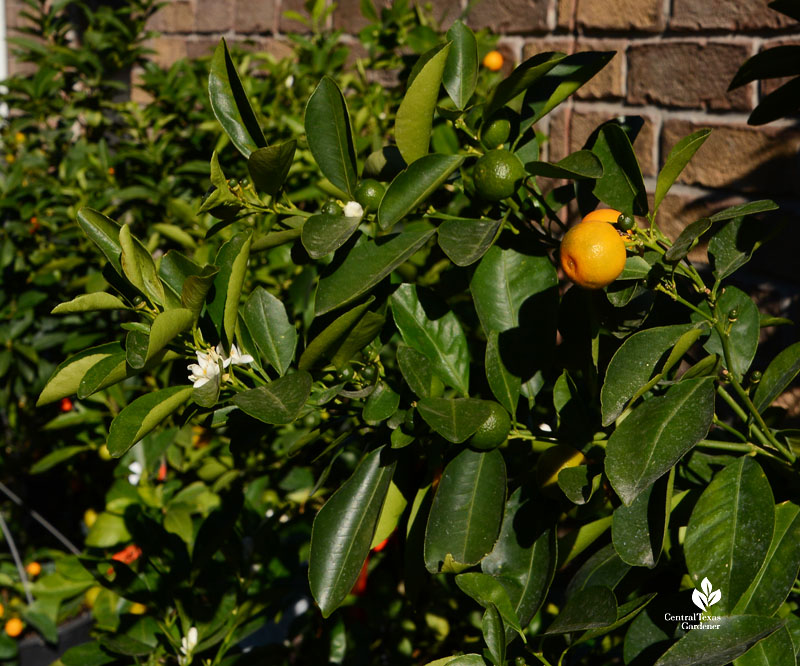
Calamondins flower and fruit almost non-stop.
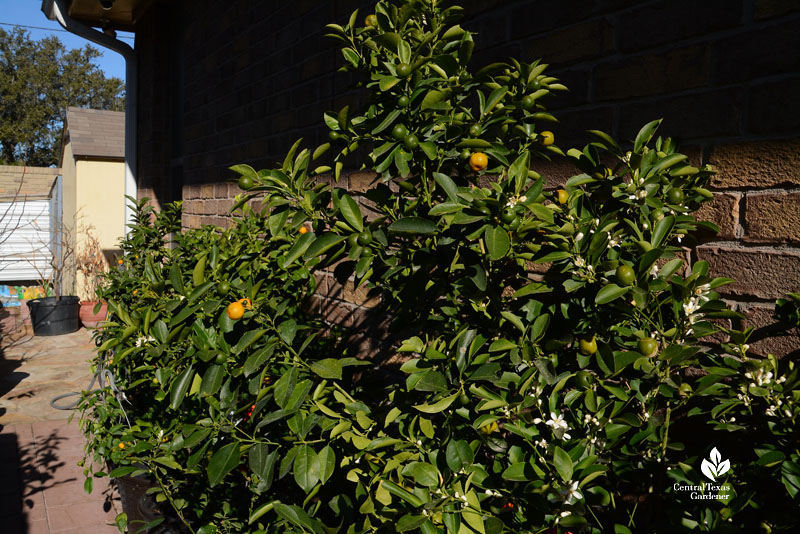
More tart than a lemon, some people prefer using them to favor water (akin to lemonade), make a pie (similar to key lime), or preserve as a marmalade. I’m one that likes to eat them whole.
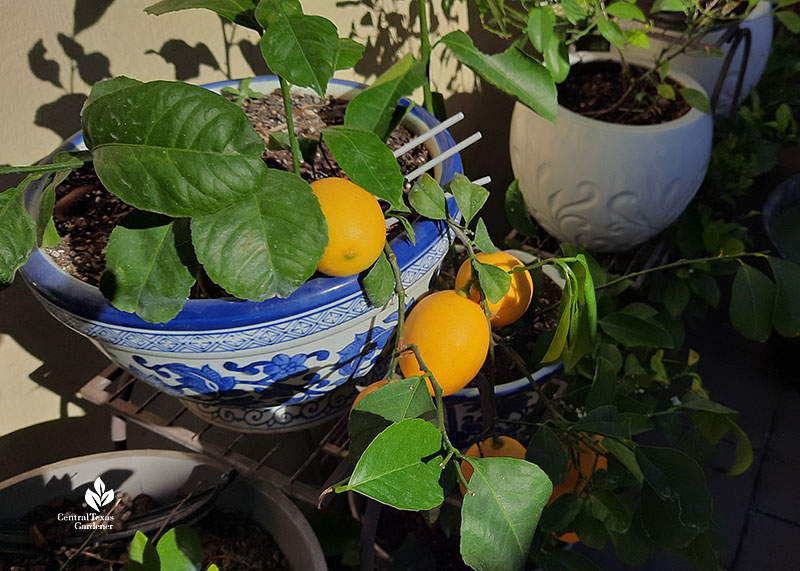
Phố grows many kinds of limes, a pink variegated lemon, and Meyer lemon. She’s experimenting with bonsai, like with this Meyer.
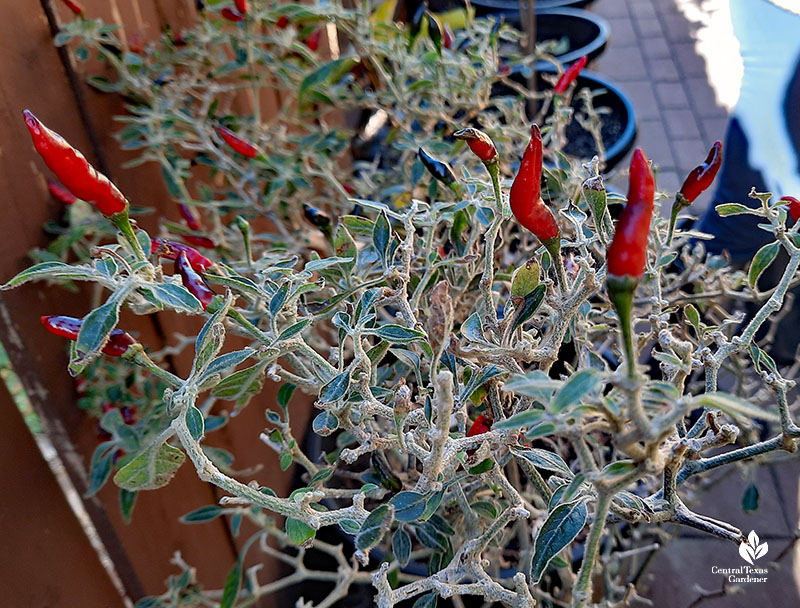
She grows about 200 pepper plants and 15-30 varieties, starting from seed. “This is a black cobra pepper; it’s spicy. You don’t want to bite into it!” she warned.
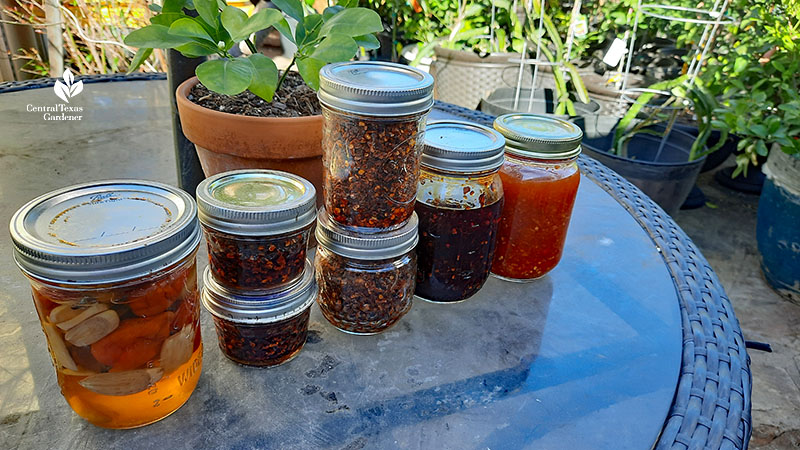
We learned that peppers aren’t cooked in Vietnamese dishes, like we would in a curry or stir fry. Instead, she makes chili paste or chili flakes to sprinkle on top or swirl into a soup or dipping sauce.
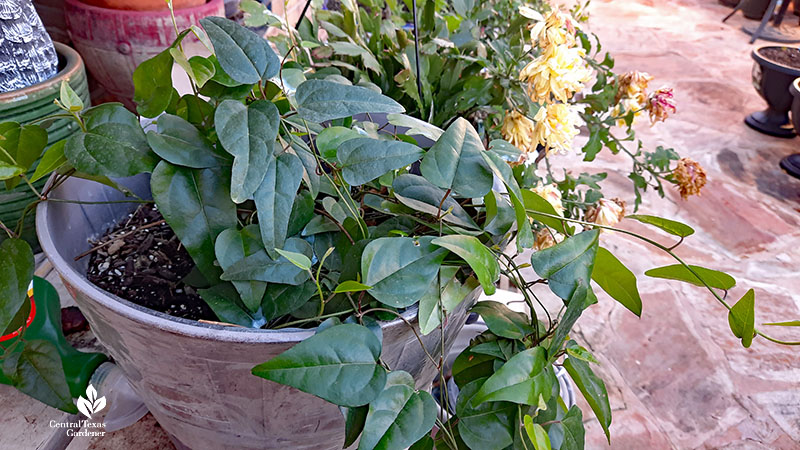
Jelly leaf plant makes a tasty Asian dessert. When leaves are crushed up into warm water, it coagulates into a gelatin. “It tastes like fresh rainwater, and it has that fiber that the kids need,” she said. Again, this is a tropical that needs winter protection.
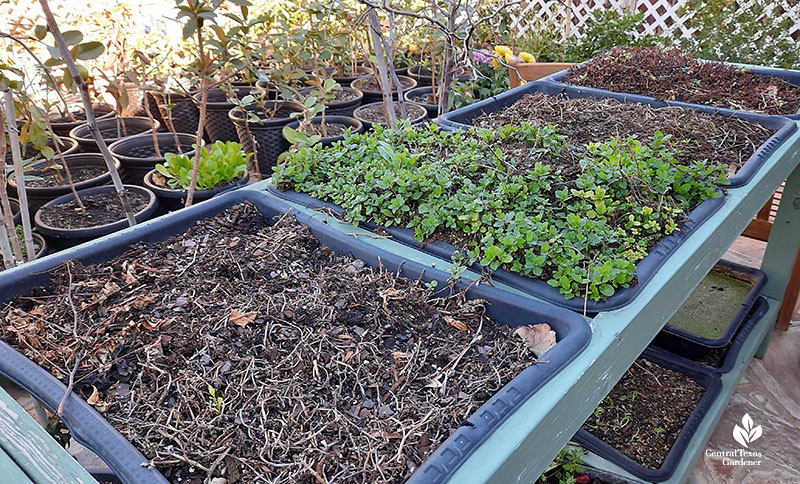
During the pandemic shutdown, her brother Hung Pham came down and built a raised herb bed. The trays are concrete mixing trays where she grows mint, Vietnamese coriander (rau ram), watercress in season, and others.
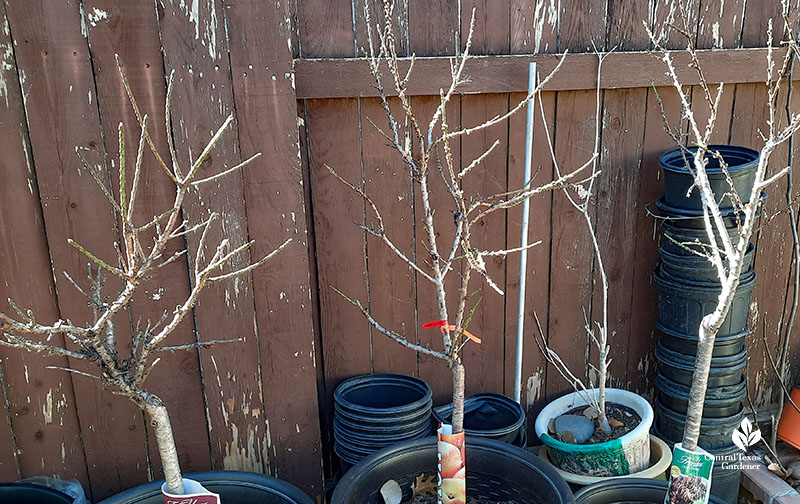
She grows a few ornamental peach trees to celebrate the Lunar New Year. It’s a tradition to have flowers in the house and peach branches are beloved. Rather than buy branches, she brings in the whole pot every year. December’s hard freeze nixed flowering in January.
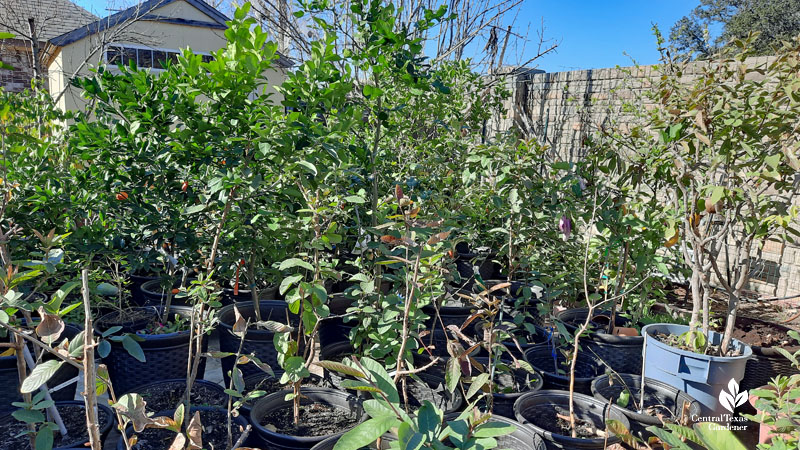
To fertilize her plants twice a year, she makes compost from vegetable scraps, waste from their chickens, and spent coffee grounds from local coffee shops. Once it breaks down and mellows, she adds worm castings.
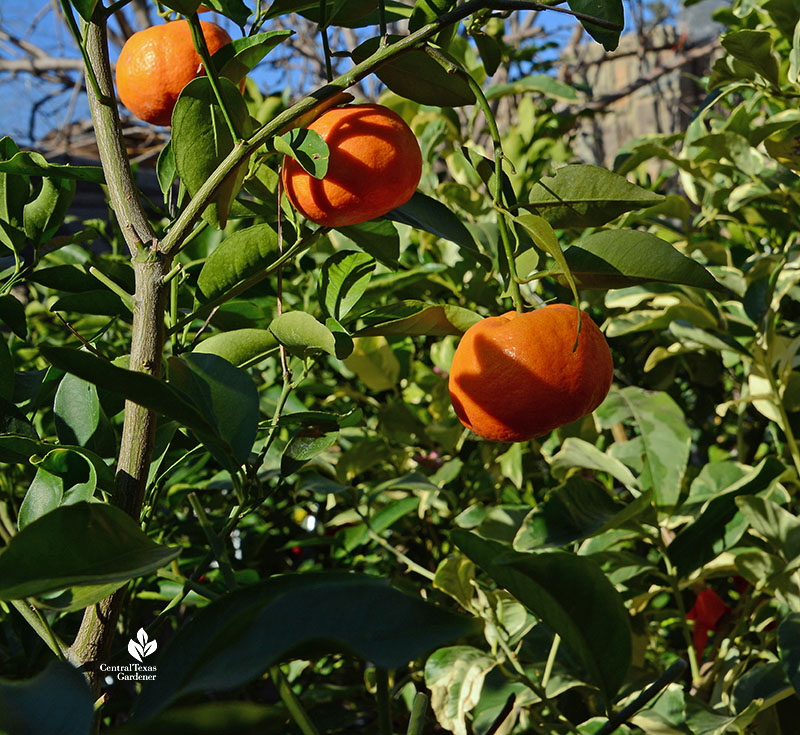
“The biggest [reward] that comes out of this is teaching my kids where food really come from. They need to come out and work and taste their sweat,” she laughed. “I call it the labor of love.”
Watch now!
Thanks for stopping by! Linda
tags:

